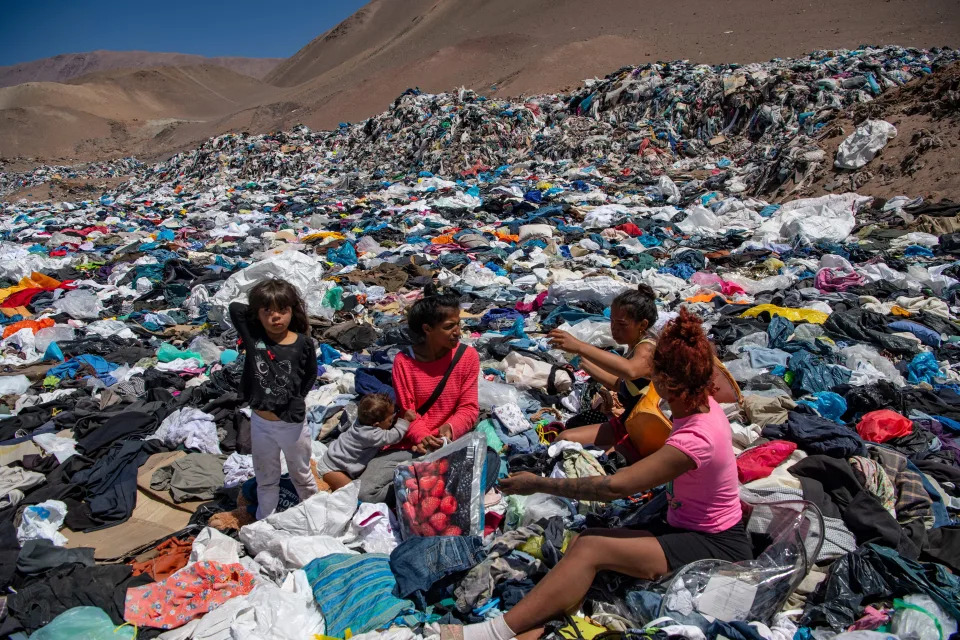Mon, May 22, 2023

CAPE CANAVERAL, Fla. (AP) — The International Space Station rolled out the welcome mat Monday for two Saudi visitors, including the kingdom's first female astronaut.
SpaceX's chartered flight arrived at the orbiting lab less than 16 hours after blasting off from Florida. The four guests will spend just over a week there, before returning to Earth in their capsule.
The 270-mile-high (430-kilometer-high) docking puts the space station population at 11, representing not only Saudi Arabia and the U.S., but the United Arab Emirates and Russia.
UAE's astronaut Sultan al-Neyadi greeted them with dates, a traditional Arab welcome.
“This shows how space brings everyone together,” said Saudi Arabia's first female astronaut, Rayyanah Barnawi, a stem cell researcher. “I'm going to live this experience to the max.”
Saudi fighter pilot Ali al-Qarni dedicated the visit to everyone back home. “This mission is not just for me and Rayyanah. This mission is also for the people with ambition and dreams.”
The Saudi government is picking up the multimillion-dollar tab for both of them.
John Shoffner, a Knoxville, Tennessee, businessman who started a sports car racing team, is paying his own way. Retired NASA astronaut Peggy Whitson is their chaperone. She now works for Axiom Space, the Houston company that organized the 10-day trip, its second to the space station.
The company cited ticket prices of $55 million each for last year's private trip by three businessmen, but won't say how much the latest seats cost.
Only one other Saudi has flown before in space, a prince who rode on NASA's shuttle Discovery in 1985.
___
The Associated Press Health and Science Department receives support from the Howard Hughes Medical Institute’s Science and Educational Media Group. The AP is solely responsible for all content.
Marcia Dunn, The Associated Press
Most powerful space telescope ever built identifies ancient star-studded galaxy
Nina Massey, PA Science Correspondent
Mon, May 22, 2023
Astronomers have used the most powerful telescope ever built to identify a massive, densely packed galaxy 25 million light years away.
Known as GS-9209, the galaxy formed around 600 to 800 million years after the Big Bang, and is the earliest of its kind found to date, researchers say.
The scientists, led by University of Edinburgh experts, used the James Webb Space Telescope (JWST) to reveal the properties of GS-9209 for the first time.
Lead researcher Dr Adam Carnall, of the University of Edinburgh’s School of Physics and Astronomy, said: “The James Webb Space Telescope has already demonstrated that galaxies were growing larger and earlier than we ever suspected during the first billion years of cosmic history.
“This work gives us our first really detailed look at the properties of these early galaxies, charting in detail the history of GS-9209, which managed to form as many stars as our own Milky Way in just 800 million years after the Big Bang.
“The fact that we also see a very massive black hole in this galaxy was a big surprise, and lends a lot of weight to the idea that these black holes are what shut down star formation in early galaxies.”
The researchers found that despite being around 10 times smaller than the Milky Way, GS-9209 has a similar number of stars to our own galaxy.
According to the study, their combined mass is around 40 billion times that of our sun, and they were formed rapidly before star formation in GS-9209 stopped.
GS-9209 is the earliest known example of a galaxy no longer forming stars – known as a quiescent galaxy.

The James Webb Space Telescope (Nasa/Alamy/PA)
When the researchers observed it at 1.25 billion years after the Big Bang, no stars had formed in the galaxy for about half a billion years.
The study also suggests there is a supermassive black hole at the centre of GS-9209.
It is five times bigger than astronomers might anticipate in a galaxy with this number of stars.
The discovery could explain why GS-9209 stopped forming new stars, the astronomers say.
When supermassive black holes grow they release huge amounts of high-energy radiation, which can heat up and push gas out of galaxies.
According to the researchers, this could have caused star formation in GS-9209 to stop, as stars form when clouds of dust and gas particles inside galaxies collapse under their own weight.
GS-9209 was first discovered in 2004 by Edinburgh PhD student Karina Caputi, who was supervised at the time by professors Jim Dunlop and Ross McLure at the university’s School of Physics and Astronomy.
The research, published in the journal Nature, was supported by the Leverhulme Trust, the Science and Technology Facilities Council and UK Research and Innovation.
Nina Massey, PA Science Correspondent
Mon, May 22, 2023
Astronomers have used the most powerful telescope ever built to identify a massive, densely packed galaxy 25 million light years away.
Known as GS-9209, the galaxy formed around 600 to 800 million years after the Big Bang, and is the earliest of its kind found to date, researchers say.
The scientists, led by University of Edinburgh experts, used the James Webb Space Telescope (JWST) to reveal the properties of GS-9209 for the first time.
Lead researcher Dr Adam Carnall, of the University of Edinburgh’s School of Physics and Astronomy, said: “The James Webb Space Telescope has already demonstrated that galaxies were growing larger and earlier than we ever suspected during the first billion years of cosmic history.
“This work gives us our first really detailed look at the properties of these early galaxies, charting in detail the history of GS-9209, which managed to form as many stars as our own Milky Way in just 800 million years after the Big Bang.
“The fact that we also see a very massive black hole in this galaxy was a big surprise, and lends a lot of weight to the idea that these black holes are what shut down star formation in early galaxies.”
The researchers found that despite being around 10 times smaller than the Milky Way, GS-9209 has a similar number of stars to our own galaxy.
According to the study, their combined mass is around 40 billion times that of our sun, and they were formed rapidly before star formation in GS-9209 stopped.
GS-9209 is the earliest known example of a galaxy no longer forming stars – known as a quiescent galaxy.

The James Webb Space Telescope (Nasa/Alamy/PA)
When the researchers observed it at 1.25 billion years after the Big Bang, no stars had formed in the galaxy for about half a billion years.
The study also suggests there is a supermassive black hole at the centre of GS-9209.
It is five times bigger than astronomers might anticipate in a galaxy with this number of stars.
The discovery could explain why GS-9209 stopped forming new stars, the astronomers say.
When supermassive black holes grow they release huge amounts of high-energy radiation, which can heat up and push gas out of galaxies.
According to the researchers, this could have caused star formation in GS-9209 to stop, as stars form when clouds of dust and gas particles inside galaxies collapse under their own weight.
GS-9209 was first discovered in 2004 by Edinburgh PhD student Karina Caputi, who was supervised at the time by professors Jim Dunlop and Ross McLure at the university’s School of Physics and Astronomy.
The research, published in the journal Nature, was supported by the Leverhulme Trust, the Science and Technology Facilities Council and UK Research and Innovation.













